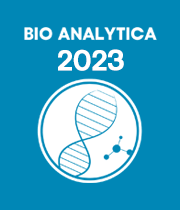Title: Reagentless bioelectrocatalytic detection system for maltose and/or glucose, based on PQQ-glucose dehydrogenase immobilized onto modified reduced graphene oxide surfaces
Abstract:
Acute pancreatitis (AP) is an inflammatory injury, including edema, hemorrhage and necrosis in pancreas caused by tissue autodigestion in relation to various pathogens. Generally, AP is categorized into the mild AP (MAP), moderate severe AP (MSAP) and severe AP (SAP). One of the criteria for determining AP is the measurement of α-Amylases levels in the blood or urine1. The main method for the determination of α-Amylases is colorimetric, but these methods are relatively slow and require expensive equipment and trained staff. α-Amylases (E.C.3.2.1.1) are enzymes that catalyze the hydrolysis of the internal α-1,4-glycosidic linkages, converting into low-molecular-weight products such as glucose, maltose, and maltotriose units. There is evidence in the literature that the form of AP correlates with glucose levels2. Theoretically, maltose levels should also increase during AP.
Our work discusses a bioelectrocatalytic system that would allow the rapid, easy and relatively inexpensive determination of glucose and/or maltose levels in urine, which would make it easier to monitor the course of AP. In our work we used PQQ-depend glucose dehydrogenase from microorganism, which was immobilized onto reduced graphene oxide (rGO) modified with organic dyes from three different classes (acridine, arylmethane and diazo) namely; neutral red (NR), malachite green (MG) and congo red (CR). All three rGO/organic dyes composites were characterized by a scanning electron microscopy, X-ray photoelectron spectroscopy and Raman spectroscopy. The impact of three rGO/organic dyes modifications employed in bioelectrocatalytic systems by forming biosensors on changes in enzyme activity and substrate selectivity were investigated in this work. An accuracy of the biosensor action was confirmed with colorimetric method.


